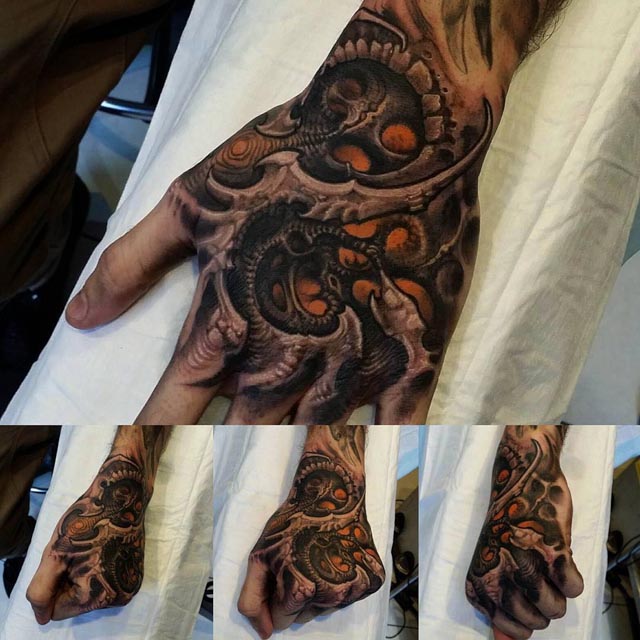
Alright, let’s talk tattoos.
Thinking about getting some ink?
Specifically, a biomechanical tattoo?
And you’re wondering, "Can I get a biomechanical tattoo on just one finger?"
Let’s dive in.
Is a Finger Biomechanical Tattoo a Good Idea?
You’re probably picturing this gnarly, robotic design snaking around your finger.
Cool, right?
But hold up a sec.
Finger tattoos are tricky little devils.
I’ve seen some amazing finger tattoos, and I’ve seen some that… well, let’s just say they didn’t age well.
Why?
- Ink Spread: Fingers are prime real estate for ink to spread. That crisp biomechanical design might end up looking like a blurry mess after a few years.
- Fading: You use your hands constantly. Washing, working, everything. This means finger tattoos fade faster than other areas.
- Size Matters: Biomechanical designs usually have intricate details. Cramming all that detail onto a tiny finger? It’s a challenge.
So, what are your options?
Making the Biomechanical Finger Tattoo Work
Don’t ditch the dream just yet.
Here’s how to increase your chances of a sick finger tattoo that lasts:
- Choose the Right Artist: This is HUGE. Find an artist who specializes in small, detailed tattoos and has experience with finger tattoos specifically. Look at their healed work.
- Keep it Simple: Opt for a more minimalist biomechanical design. Less detail means less chance of blurring. Think bold lines and fewer tiny components.
- Placement is Key: Discuss placement with your artist. Maybe the side of your finger, rather than the top, will work better.
- Aftercare is Crucial: Baby that tattoo! Keep it moisturized, protected from the sun, and follow your artist’s aftercare instructions religiously.
- Be Realistic: Understand that finger tattoos often require touch-ups. Be prepared to go back to your artist for maintenance.
Real-Life Example:
I had a friend, let’s call him Mark, who got a small geometric design on his finger. He went to a great artist and followed all the aftercare advice.
It still faded noticeably within a year.
He got it touched up, and it looks great again, but he knows he’ll need to keep doing that.
It’s just the nature of finger tattoos.
Alternatives to a Single Finger Biomechanical Tattoo
Maybe a full finger biomechanical tattoo isn’t the best idea.
Consider these:
- Hand Tattoo: Extend the design onto the back of your hand. This gives the artist more space and reduces the risk of blurring on the finger itself.
- Wrist/Forearm: A biomechanical piece on your wrist or forearm can be just as impactful and will likely hold up better over time. Plus, it’s more visible.
- A Larger Design: Instead of focusing on a single finger, think about incorporating the biomechanical element into a larger, more comprehensive tattoo on your arm or leg.
FAQ: Biomechanical Finger Tattoos
- Do finger tattoos hurt? Yes, they can. Fingers have a lot of nerve endings.
- How much does a finger tattoo cost? Depends on the artist and complexity, but expect to pay at least $50-$100, even for a small design.
- Will my finger tattoo fade completely? It’s possible, but unlikely if you follow aftercare instructions and get touch-ups.
- Can I get a biomechanical tattoo removed from my finger? Yes, but laser tattoo removal can be painful and expensive.
In conclusion, while getting a biomechanical tattoo on just one finger is possible, it comes with challenges. Choose your artist wisely, consider design limitations, and be prepared for potential fading. Think carefully about whether a biomechanical tattoo on just one finger is the right choice for you.
Leave a Reply